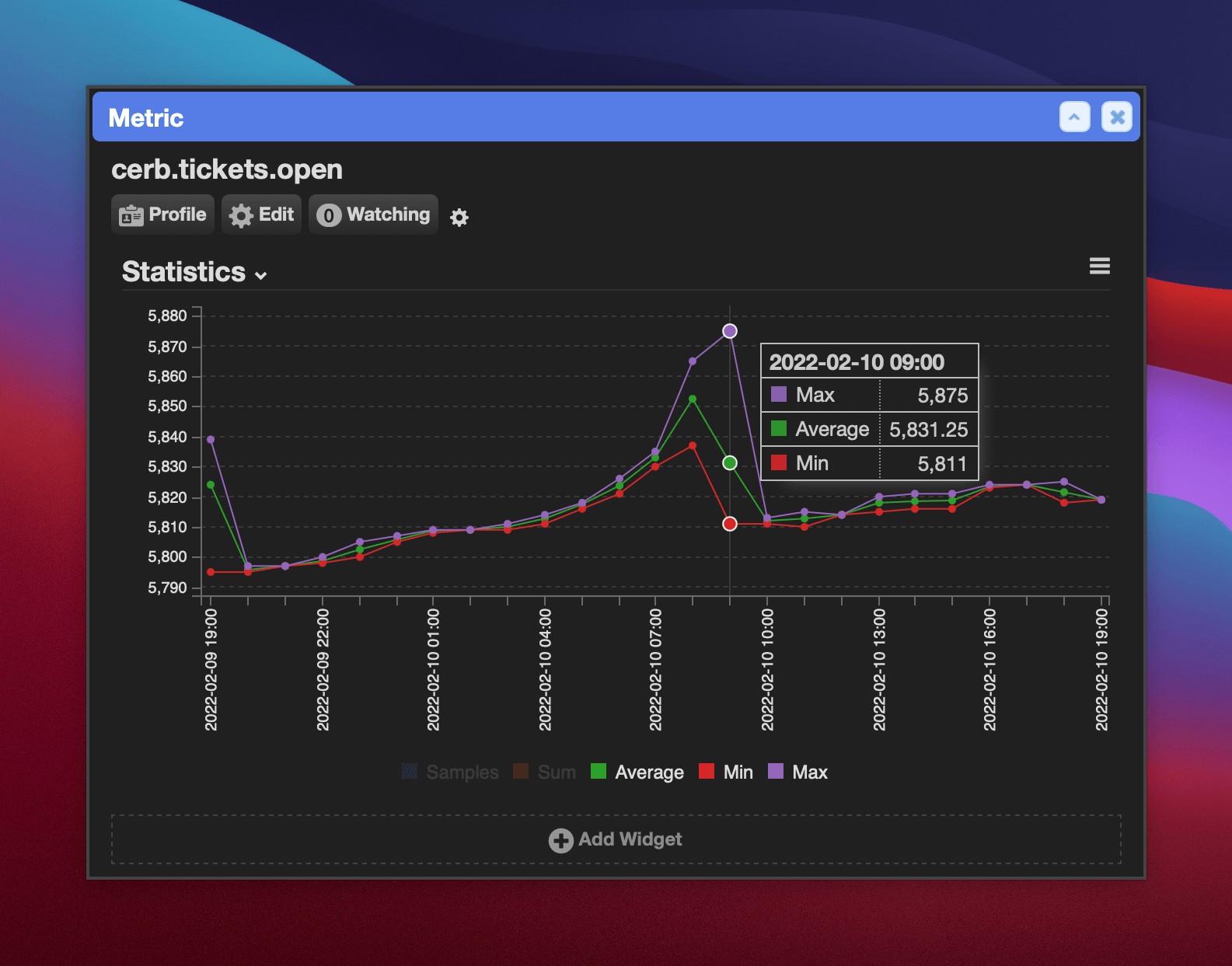Metrics Timeseries
metrics.timeseries
metrics.timeseries data queries aggregates metrics statistics over a date range. This can retrieve multiple series each with a different metric and function (avg, sum, min, max, count). A series can also be aggregated or filtered by any combination of metric dimensions.

type:metrics.timeseries
period:hour
range:"-24 hours to now"
series.avg:(
label:Average
metric:cerb.tickets.open
function:avg
)
series.min:(
label:Min
metric:cerb.tickets.open
function:min
)
series.avg:(
label:Max
metric:cerb.tickets.open
function:max
)
timezone:Europe/Berlin
format:timeseriesperiod:
The period is the metric's level of detail:
minute |
5-minute statistics (up to the past 24 hours) |
hour |
hourly statistics (up to the past 2 weeks) |
day |
daily statistics (no limit) |
week |
weekly statistics starting on Monday (no limit) |
week-sun |
weekly statistics starting on Sunday (no limit) |
month |
monthly statistics (no limit) |
year |
yearly statistics (no limit) |
range:
The date range to show statistics for, grouped by the period.
this week |
this month |
-1 year |
Jan 1 2025 to Dec 31 2025 |
series.*:
Each series.* series should provide:
| Key | Description |
|---|---|
metric: |
The metric name |
by: |
A comma-separated list of dimension keys to group by |
function: |
sum, min, max, average, samples, distinct, faceted_average, faceted_min, faceted_max. The faceted functions sum samples with different dimensions into a single total. |
label: |
A human-readable label for this series |
missing: |
How to handle missing sample periods: null (default), zero (set to 0), or carry (carry the last sample) |
query: |
An optional query using dimension keys to filter samples. |
series.*.query:
Dimension filters can use negation. For instance, query:(worker_id:![1,2,3])
Record-based dimension can use deep search filers.
timeout:
The query will be aborted after this many milliseconds have elapsed with no response.
The default is 20000 milliseconds (20 seconds).
timezone:
Statistics are stored in GMT/UTC. The timezone: location shifts timestamps when grouping metrics by period.
For example:
America/Los_Angeles |
Europe/Berlin |
Asia/Tokyo |
If omitted, this defaults to the timezone of the current worker or the server.
format:
The metric results can be returned in various formats:
| Format | |
|---|---|
dictionaries |
Returns series data suitable for a sheet or automation. |
timeblock |
Returns data suitable for a timeblocks widget |
timeseries |
(Default) Returns series-based data suitable for a time-series chart (with the 'x' axis values as timestamps) |